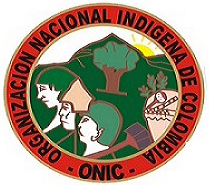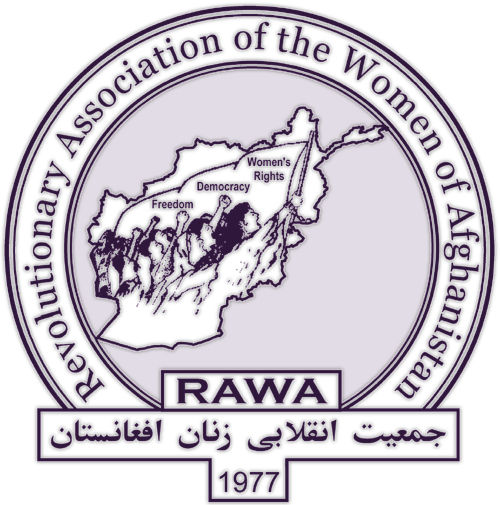Andean Theater
Peru: state of emergency extended in VRAE
On Aug. 1, Peru's President Ollanta Humala signed a decree extending for another 60 days the state of emergency in the remote jungle area called the VRAE, for the Apurímac-Ene River Valley, where a remnant faction of the Shining Path guerilla movement remains active. However, as we have repeatedly noted, the acronym "VRAE" is becoming an elastic term defined by areas where the Shining Path is active rather than by geography. The state of emergency includes Echarate district, in La Convención province, Cuzco region—in the valley of the Urubamba, the next river basin to the east of the Apurímac-Ene. Similarly, districts of Tayacaja province in Huancavelica region are also affected—in the watershed of the Río Mantaro, to the west of the Apurímac-Ene, and on the edge of the central Andean section of the country. Affected districts in Ayacucho and Junín regions constitute the VRAE "proper"—actually within the Apurímac-Ene watershed. Most of the affected districts have been under a repeatedly extended state of emergency since May 2003, but Echarate only came under the decree in April after guerillas took scores of oil pipeline construction workers hostage.
Peru: Cajamarca dialogue nears collapse
The president of Peru's Cajamarca region, Gregorio Santos, said Aug. 9 that he sees no purpose in continuing talks with two Roman Catholic priests trying to mediate a peaceful solution to the dispute over the proposed Conga gold-mining project. "The facilitators have already completed their tasks," Santos said. "The facilitators aren't going to make any decisions. The executive branch already knows the position of the people of Cajamarca." The statement came the day after facilitators, Trujillo Archbishop Miguel Cabrejos and dissident priest Gaston Garatea (suspended from the ministry by the Archdiocese of Lima for his populist positions), met with Prime Minister Juan Jiménez and other members of President Ollanta Humala's cabinet. The facilitators issued a statement calling on the central government to lift the state of emergency that was imposed on much of Cajamarca region in early July following an escalations of protests against the Conga project. (Dow Jones, Aug. 9; Andina, Aug. 8; CNA, July 24)
Colombia: UN calls for dialogue with indigenous movement
The UN representative for indigenous rights, James Anaya, called on the Colombian government Aug. 9 to advance in dialogues with the indigenous movement in southwestern Cauca department that has been calling for the military to leave its territory. In a message commemorating the International Day of the Rights of Indigenous Peoples, Anaya highlighted "the rights of property and autonomy the indigenous peoples have over their own traditional territories," while stressing that the Colombian state needed to consult the indigenous movements before establishing military presence on their territories. Anaya emphasized that "the presence of the army should not contribute to putting the indigenous in danger."
Colombia: blows against narco-para network?
Erikson Vargas AKA "Sebastian"—purported leader of the Medellín-based crime syndicate Oficina de Envigado—was captured by Colombian National Police on Aug. 8. in Copacabana, a town just outside the country's second-largest city. Police said one of Sebastian's bodyguards was killed when police stormed his hideout. President Juan Manuel Santos praised the arrest as a "super-blow" against organized crime and promised a "gold medal to the police" for the capture. (Colombia Reports, BBC News, Aug. 8) That same day, Luis Fernando Jaramillo Arroyave AKA "Nano"—a top commander of Los Urabeños paramilitary group—was extradited to the US on drug trafficking charges. Nano, also said to have founded Los Paisas paramilitary group, was captured in Medellín in February 2011 and later sentenced nine months on charges of murder, drug trafficking and conspiracy. (Colombia Reports, Aug. 8)
Peru: toxic mining spill sickens villagers, Anonymous hacks back
More than 100 local residents were sickened by a spill of toxic copper concentrate at one of Peru's biggest mines Aug. 3. The Áncash regional health office said 140 people were treated for "irritative symptoms caused by the inhalation of toxins" after a pipeline carrying the concentrate under high pressure burst open in the village of Santa Rosa de Cajacay. Most of those affected had joined in efforts to prevent liquid copper slurry from reaching the nearby Río Fortaleza after the pipe linking the Antamina copper mine to the coast ruptured last week, said village mayor Hilario Morán. "Without taking into account the consequences, we pitched in to help," Morán told the Associated Press by phone. The people used absorbent fabric provided by the mine but were not given gloves or protective masks, admitted the mine's environmental director Antonio Mendoza. Shortly afterward, people became ill, vomiting, suffering headaches and nose bleeds.
Bolivia: coca production down, cocaine production up?
The US government has determined that Bolivia now has fewer coca plantations but it is producing more cocaine because traffickers are using a more "efficient" process known as the "Colombian method," according to an interview with a diplomat in La Paz daily Pagina Siete. Said John Creamer, outgoing charge d'affaires at the US diplomatic mission in La Paz: "That is the paradox in Bolivia. There are fewer coca plantations in the past three years, but there's more production of cocaine." Creamer said that using the new process, producers "can obtain more cocaine with lesser quantities of coca leaves." He also warned of the "resowing" of eradicated coca fields. The Bolivian government boasts that it reduced coca leaf production for three consecutive years from 2009 to 2011, but according to UN figures overall coca production increased from 25,400 hectares in 2006 when Evo Morales took power to 31,000 hectares in 2010 (the last year for which the UN has data). Bolivian law allows the legal cultivation of just 12,000 hectares of coca for traditional purposes.
Evo Morales: Maya calendar portends end of Coca-Cola... and capitalism
The government of President Evo Morales announced July 17 that it will invite heads of state and indigenous leaders from around the world to Bolivia on Dec. 21, South America's summer solstice, believing that this day will mark "the end" of capitalism and Coca-Cola, and the beginning of a time "of love" and a "culture of life." Exterior Minister David Choquehuanca, who made the announcement, said the date was chosen because it marks the "end of the Maya calendar," and a ceremony will be held, to be presided over by Morales, on the Island of the Sun in Lake Titicaca. Choquehuanca elaborated: "December 21 of 2012 marks the end of egoism, of division. December 21 will be the end of Coca-Cola, and the beginning of mocochinchi." He added that on this day, "the planets will line up after 26,000 years," but rather than meaning the end of the world it will mean "the end of hatred and the beginning of love." (MinutoUno, Buenos Aires, July 17)
Bolivia: government yields to indigenous demands in Mallku Khota mining conflict
Following a wave of protests by local Aymara campesinos that left one dead earlier this month, Bolivian President Evo Morales agreed to revoke the permit for the Mallku Khota mining project in Potosí department July 10. The accord was announced after a gathering at the presidential palace of Aymara leaders from both sides of the conflict—those who oppose the project as a threat to local waters, and those who support it as source of new employment. The situation escalated after indigenous opponents of the mine detained—"kidnapped," in English-language media coverage—seven mining company employees. Under the new deal, the concessions granted to Canada-based South American Silver in 2004 will be cancelled, and the Mining Ministry will explore the possibilities of creating a state entity to exploit deposits of the rare element indium at Mallku Khota. Aymara leader Cancio Rojas, who had been jailed after the "kidnapping" incident, was released July 15, after paying a fine of 10,000 bolivianos (about $1,500), in an apparent compromise solution. Local Aymara comunarios said the mine personnel were illegally operating on their ayllu (communal land holding). (OCMAL, July 19; La Razón, July 15; EFE, July 11)















Recent Updates
3 hours 42 min ago
11 hours 32 min ago
2 days 5 hours ago
2 days 5 hours ago
2 days 9 hours ago
2 days 9 hours ago
3 days 10 hours ago
4 days 6 hours ago
5 days 3 hours ago
5 days 3 hours ago